当前位置:网站首页>语义分割实验:Unet网络/MSRC2数据集
语义分割实验:Unet网络/MSRC2数据集
2022-07-05 12:03:00 【华为云】
本实验使用Unet网络对MSRC2数据集进行分割
源代码文件和MSRC2数据集获取方式见文末
1.数据划分
把图片数据从文件夹整理成csv文件,每一行代表其路径
class image2csv(object): # 分割训练集 验证集 测试集 # 做成对应的txt def __init__(self, data_root, image_dir, label_dir, slice_data, width_input, height_input): self.data_root = data_root self.image_dir = image_dir self.label_dir = label_dir self.slice_train = slice_data[0] self.slice_val = slice_data[1] self.width = width_input self.height = height_input def read_path(self): images = [] labels = [] for i, im in enumerate(os.listdir(self.image_dir)): label_name = im.split('.')[0] + '_GT' + '.bmp' # 由于各图片大小不同,这里进行简单的筛选,只有长宽均大于200px才被选取 if os.path.exists(os.path.join(self.label_dir, label_name)): size_w, size_h = Image.open( os.path.join(self.image_dir, im)).size size_lw, size_lh = Image.open( os.path.join(self.label_dir, label_name)).size if min(size_w, size_lw) > self.width and min(size_h, size_lh) > self.height: images.append(os.path.join(self.image_dir, im)) labels.append(os.path.join(self.label_dir, label_name)) else: continue self.data_length = len(images) # 两个文件夹都有的图片的长度 data_path = { 'image': images, 'label': labels, } return data_path def generate_csv(self): data_path = self.read_path() # 存放了路径 data_path_pd = pd.DataFrame(data_path) train_slice_point = int(self.slice_train*self.data_length) # 0.7*len validation_slice_point = int( (self.slice_train+self.slice_val)*self.data_length) # 0.8*len train_csv = data_path_pd.iloc[:train_slice_point, :] validation_csv = data_path_pd.iloc[train_slice_point:validation_slice_point, :] test_csv = data_path_pd.iloc[validation_slice_point:, :] train_csv.to_csv(os.path.join( self.data_root, 'train.csv'), header=None, index=None) validation_csv.to_csv(os.path.join( self.data_root, 'val.csv'), header=None, index=None) test_csv.to_csv(os.path.join(self.data_root, 'test.csv'), header=False, index=False)2.数据预处理
颜色与分类标签的转换
语义分割主要是构建一个颜色图(colormap),对每一类分割的对象分别给予不同的颜色标注。
def colormap(n): cmap = np.zeros([n, 3]).astype(np.uint8) for i in np.arange(n): r, g, b = np.zeros(3) for j in np.arange(8): r = r + (1 << (7 - j)) * ((i & (1 << (3 * j))) >> (3 * j)) g = g + (1 << (7 - j)) * ((i & (1 << (3 * j + 1))) >> (3 * j + 1)) b = b + (1 << (7 - j)) * ((i & (1 << (3 * j + 2))) >> (3 * j + 2)) cmap[i, :] = np.array([r, g, b]) return cmap class label2image(): def __init__(self, num_classes=22): self.colormap = colormap(256)[:num_classes].astype('uint8') def __call__(self, label_pred, label_true): pred = self.colormap[label_pred] true = self.colormap[label_true] return pred, trueclass image2label(): def __init__(self, num_classes=22): # 给每一类都来一种颜色 colormap = [[0, 0, 0], [128, 0, 0], [0, 128, 0], [128, 128, 0], [0, 0, 128], [0, 128, 128], [128, 128, 128], [192, 0, 0], [64, 128, 0], [192, 128, 0], [64, 0, 128], [192, 0, 128], [64, 128, 128], [192, 128, 128], [0, 64, 0], [128, 64, 0], [0, 192, 0], [128, 64, 128], [ 0, 192, 128], [128, 192, 128], [64, 64, 0], [192, 64, 0]] self.colormap = colormap[:num_classes] # 创建256^3 次方空数组,颜色的所有组合 cm2lb = np.zeros(256 ** 3) for i, cm in enumerate(self.colormap): cm2lb[(cm[0] * 256 + cm[1]) * 256 + cm[2]] = i # 符合这种组合的标记这一类 self.cm2lb = cm2lb def __call__(self, image): image = np.array(image, dtype=np.int64) idx = (image[:, :, 0] * 256 + image[:, :, 1]) * 256 + image[:, :, 2] label = np.array(self.cm2lb[idx], dtype=np.int64) # 根据颜色条找到这个label的标号 return label图片裁剪
class RandomCrop(object): """ 自定义实现图像与label随机裁剪相同的位置 """ def __init__(self, size): self.size = size @staticmethod def get_params(img, output_size): w, h = img.size th, tw = output_size if w == tw and h == th: return 0, 0, h, w i = random.randint(0, h - th) j = random.randint(0, w - tw) return i, j, th, tw def __call__(self, img, label): i, j, h, w = self.get_params(img, self.size) return img.crop((j, i, j + w, i + h)), label.crop((j, i, j + w, i + h))3.数据加载
class CustomDataset(Dataset): def __init__(self, data_root_csv, input_width, input_height, test=False): # 在子类进行初始化时,也想继承父类的__init__()就通过super()实现 super(CustomDataset, self).__init__() self.data_root_csv = data_root_csv self.data_all = pd.read_csv(self.data_root_csv) self.image_list = list(self.data_all.iloc[:, 0]) self.label_list = list(self.data_all.iloc[:, 1]) self.width = input_width self.height = input_height def __len__(self): return len(self.image_list) def __getitem__(self, index): img = Image.open(self.image_list[index]).convert('RGB') label = Image.open(self.label_list[index]).convert('RGB') img, label = self.train_transform( img, label, crop_size=(self.width, self.height)) # assert(img.size == label.size)s return img, label def train_transform(self, image, label, crop_size=(256, 256)): image, label = RandomCrop(crop_size)( image, label) # 第一个括号是实例话对象,第二个是__call__方法 tfs = transforms.Compose([ transforms.ToTensor(), transforms.Normalize([.485, .456, .406], [.229, .224, .225]) ]) image = tfs(image) label = image2label()(label) label = torch.from_numpy(label).long() return image, label4.Unet 网络结构

双卷积结构
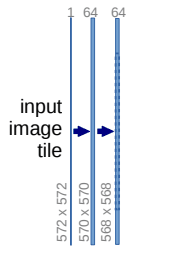
class DoubleConv(nn.Module): def __init__(self, in_channels, out_channels, mid_channels=None): super().__init__() if not mid_channels: mid_channels = out_channels self.double_conv = nn.Sequential( nn.Conv2d(in_channels, mid_channels, kernel_size=3, padding=1), nn.BatchNorm2d(mid_channels), nn.ReLU(inplace=True), nn.Conv2d(mid_channels, out_channels, kernel_size=3, padding=1), nn.BatchNorm2d(out_channels), nn.ReLU(inplace=True) ) def forward(self, x): return self.double_conv(x)下采样
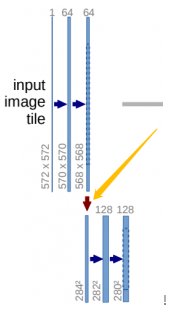
class Down(nn.Module): def __init__(self, in_channels, out_channels): super().__init__() self.maxpool_conv = nn.Sequential( nn.MaxPool2d(2), DoubleConv(in_channels, out_channels) ) def forward(self, x): return self.maxpool_conv(x)上采样
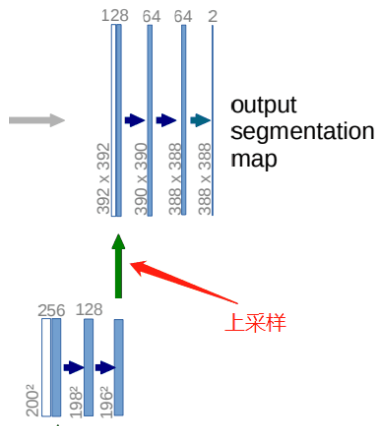
class Up(nn.Module): def __init__(self, in_channels, out_channels, bilinear=True): super().__init__() if bilinear: self.up = nn.Upsample( scale_factor=2, mode='bilinear', align_corners=True) self.conv = DoubleConv(in_channels, out_channels, in_channels // 2) else: self.up = nn.ConvTranspose2d( in_channels, in_channels // 2, kernel_size=2, stride=2) self.conv = DoubleConv(in_channels, out_channels) def forward(self, x1, x2): x1 = self.up(x1) # input is CHW diffY = x2.size()[2] - x1.size()[2] diffX = x2.size()[3] - x1.size()[3] x1 = F.pad(x1, [diffX // 2, diffX - diffX // 2, diffY // 2, diffY - diffY // 2]) x = torch.cat([x2, x1], dim=1) return self.conv(x)输出
class OutConv(nn.Module): def __init__(self, in_channels, out_channels): super(OutConv, self).__init__() self.conv = nn.Conv2d(in_channels, out_channels, kernel_size=1) def forward(self, x): return self.conv(x)整体结构
class UNet(nn.Module): def __init__(self, n_channels, n_classes, bilinear=True): super(UNet, self).__init__() self.n_channels = n_channels self.n_classes = n_classes self.bilinear = bilinear self.inc = DoubleConv(n_channels, 64) self.down1 = Down(64, 128) self.down2 = Down(128, 256) self.down3 = Down(256, 512) factor = 2 if bilinear else 1 self.down4 = Down(512, 1024 // factor) self.up1 = Up(1024, 512 // factor, bilinear) self.up2 = Up(512, 256 // factor, bilinear) self.up3 = Up(256, 128 // factor, bilinear) self.up4 = Up(128, 64, bilinear) self.outc = OutConv(64, n_classes) def forward(self, x): x1 = self.inc(x) x2 = self.down1(x1) x3 = self.down2(x2) x4 = self.down3(x3) x5 = self.down4(x4) x = self.up1(x5, x4) x = self.up2(x, x3) x = self.up3(x, x2) x = self.up4(x, x1) logits = self.outc(x) return logits5.评估指标:MIoU

# 得到混淆矩阵def _fast_hist(label_true, label_pred, n_class): mask = (label_true >= 0) & (label_true < n_class) hist = np.bincount( n_class * label_true[mask].astype(int) + label_pred[mask], minlength=n_class ** 2).reshape(n_class, n_class) return hist# 计算MIOUdef miou_score(label_trues, label_preds, n_class): hist = np.zeros((n_class, n_class)) for lt, lp in zip(label_trues, label_preds): hist += _fast_hist(lt.flatten(), lp.flatten(), n_class) iou = np.diag(hist) / (hist.sum(axis=1) + hist.sum(axis=0) - np.diag(hist)) miou = np.nanmean(iou) return miou6.训练
GPU_ID = 0INPUT_WIDTH = 200INPUT_HEIGHT = 200BATCH_SIZE = 2NUM_CLASSES = 22LEARNING_RATE = 1e-3epoch = 300net = UNet(3, NUM_CLASSES)# -------------------- 生成csv ------------------DATA_ROOT = './MSRC2/'image = os.path.join(DATA_ROOT, 'Images')label = os.path.join(DATA_ROOT, 'GroundTruth')slice_data = [0.7, 0.1, 0.2] # 训练 验证 测试所占百分比tocsv = image2csv(DATA_ROOT, image, label, slice_data, INPUT_WIDTH, INPUT_HEIGHT)tocsv.generate_csv()# -------------------------------------------model_path = './model_result/best_model_UNet.mdl'train_csv_dir = 'MSRC2/train.csv'val_csv_dir = 'MSRC2/val.csv'train_data = CustomDataset(train_csv_dir, INPUT_WIDTH, INPUT_HEIGHT)train_dataloader = DataLoader( train_data, batch_size=BATCH_SIZE, shuffle=True, num_workers=0)val_data = CustomDataset(val_csv_dir, INPUT_WIDTH, INPUT_HEIGHT)val_dataloader = DataLoader( val_data, batch_size=BATCH_SIZE, shuffle=True, num_workers=0)net = UNet(3, NUM_CLASSES)use_gpu = torch.cuda.is_available()# 构建网络optimizer = optim.Adam(net.parameters(), lr=LEARNING_RATE, weight_decay=1e-4)criterion = nn.CrossEntropyLoss()if use_gpu: torch.cuda.set_device(GPU_ID) net.cuda() criterion = criterion.cuda()if os.path.exists(model_path): net.load_state_dict(torch.load(model_path)) print('successful load weight!')else: print('not successful load weight')# 训练验证# def train():best_score = 0.0for e in range(epoch): net.train() train_loss = 0.0 label_true = torch.LongTensor() label_pred = torch.LongTensor() for i, (batchdata, batchlabel) in enumerate(train_dataloader): if use_gpu: batchdata, batchlabel = batchdata.cuda(), batchlabel.cuda() output = net(batchdata) output = F.log_softmax(output, dim=1) loss = criterion(output, batchlabel) pred = output.argmax(dim=1).squeeze().data.cpu() real = batchlabel.data.cpu() optimizer.zero_grad() loss.backward() optimizer.step() train_loss += loss.cpu().item() * batchlabel.size(0) label_true = torch.cat((label_true, real), dim=0) label_pred = torch.cat((label_pred, pred), dim=0) train_loss /= len(train_data) miou = miou_score( label_true.numpy(), label_pred.numpy(), NUM_CLASSES) print('\nepoch:{}, train_loss:{:.4f},miou:{:.4f}'.format( e + 1, train_loss, miou)) net.eval() val_loss = 0.0 val_label_true = torch.LongTensor() val_label_pred = torch.LongTensor() with torch.no_grad(): for i, (batchdata, batchlabel) in enumerate(val_dataloader): if use_gpu: batchdata, batchlabel = batchdata.cuda(), batchlabel.cuda() output = net(batchdata) output = F.log_softmax(output, dim=1) loss = criterion(output, batchlabel) pred = output.argmax(dim=1).data.cpu() real = batchlabel.data.cpu() val_loss += loss.cpu().item() * batchlabel.size(0) val_label_true = torch.cat((val_label_true, real), dim=0) val_label_pred = torch.cat((val_label_pred, pred), dim=0) val_loss /= len(val_data) val_miou = miou_score(val_label_true.numpy(), val_label_pred.numpy(), NUM_CLASSES) print('epoch:{}, val_loss:{:.4f}, miou:{:.4f}'.format( e + 1, val_loss, val_miou)) # 通过验证集的val_miou来判断模型效果,保存最好的模型权重 score = val_miou if score > best_score: best_score = score torch.save(net.state_dict(), model_path)7.测试
GPU_ID = 0INPUT_WIDTH = 200INPUT_HEIGHT = 200BATCH_SIZE = 2NUM_CLASSES = 22LEARNING_RATE = 1e-3model_path = './model_result/best_model_UNet.mdl'torch.cuda.set_device(0)net = UNet(3, NUM_CLASSES)# 加载网络进行测试test_csv_dir = './MSRC2/train.csv'testset = CustomDataset(test_csv_dir, INPUT_WIDTH, INPUT_HEIGHT)test_dataloader = DataLoader(testset, batch_size=15, shuffle=False)net.load_state_dict(torch.load(model_path, map_location='cuda:0'))test_label_true = torch.LongTensor()test_label_pred = torch.LongTensor()# 这里只提取一个batch来测试,即15张图片for (val_image, val_label) in test_dataloader: net.cuda() out = net(val_image.cuda()) pred = out.argmax(dim=1).squeeze().data.cpu().numpy() label = val_label.data.numpy() output = F.log_softmax(out, dim=1) pred = output.argmax(dim=1).data.cpu() real = val_label.data.cpu() test_label_true = torch.cat((test_label_true, real), dim=0) test_label_pred = torch.cat((test_label_pred, pred), dim=0) test_miou = miou_score(test_label_true.numpy(), test_label_pred.numpy(), NUM_CLASSES) print("测试集上的miou为:" + str(test_miou)) val_pred, val_label = label2image(NUM_CLASSES)(pred, label) for i in range(15): val_imag = val_image[i] val_pre = val_pred[i] val_labe = val_label[i] # 反归一化 mean = [.485, .456, .406] std = [.229, .224, .225] x = val_imag for j in range(3): x[j] = x[j].mul(std[j])+mean[j] img = x.mul(255).byte() img = img.numpy().transpose((1, 2, 0)) # 原图 fig, ax = plt.subplots(1, 3, figsize=(30, 30)) ax[0].imshow(img) ax[1].imshow(val_labe) ax[2].imshow(val_pre) plt.show() plt.savefig('./pic_results/pic_UNet_{}.png'.format(i)) break理论上,应该用测试集进行测试,但测试的结果惨不忍观。可能是由于训练次数不足导致,在上面这段代码中,直接导入训练集进行查看,下面是和GroundTruth进行对比参照图。



完整源码
实验源码+MSRC2数据集
https://download.csdn.net/download/qq1198768105/85907409
边栏推荐
- [pytorch modifies the pre training model: there is little difference between the measured loading pre training model and the random initialization of the model]
- How to protect user privacy without password authentication?
- 11. (map data section) how to download and use OSM data
- 11.(地图数据篇)OSM数据如何下载使用
- Linux安装部署LAMP(Apache+MySQL+PHP)
- redis的持久化机制原理
- 谜语1
- 【主流Nivida显卡深度学习/强化学习/AI算力汇总】
- Four operations and derivative operations of MATLAB polynomials
- 查看rancher中debug端口信息,并做IDEA Remote Jvm Debug
猜你喜欢
![[singleshotmultiboxdetector (SSD, single step multi frame target detection)]](/img/c7/8ad64582e09683818171b625769f37.png)
[singleshotmultiboxdetector (SSD, single step multi frame target detection)]

12. (map data) cesium city building map
![[upsampling method opencv interpolation]](/img/6b/5e8f3c2844f0cbbbf03022e0efd5f0.png)
[upsampling method opencv interpolation]
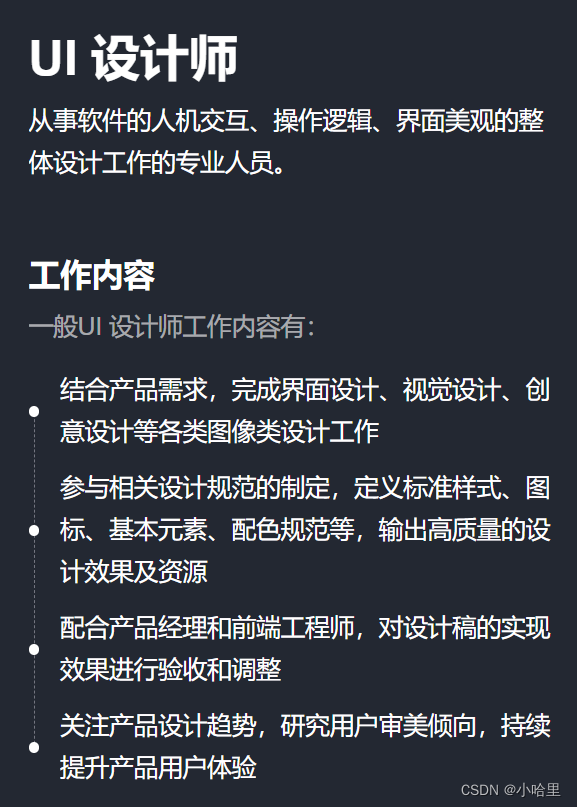
Intern position selection and simplified career development planning in Internet companies
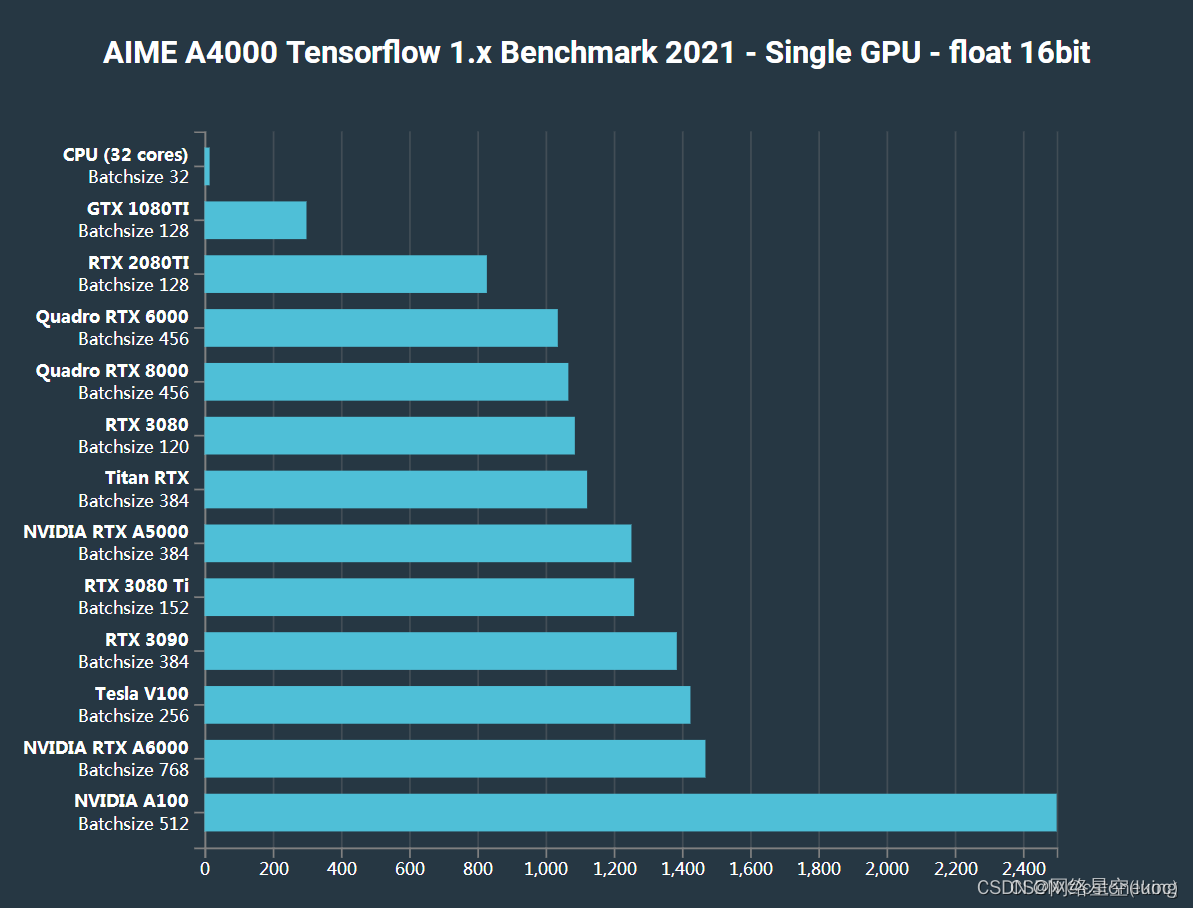
【主流Nivida显卡深度学习/强化学习/AI算力汇总】
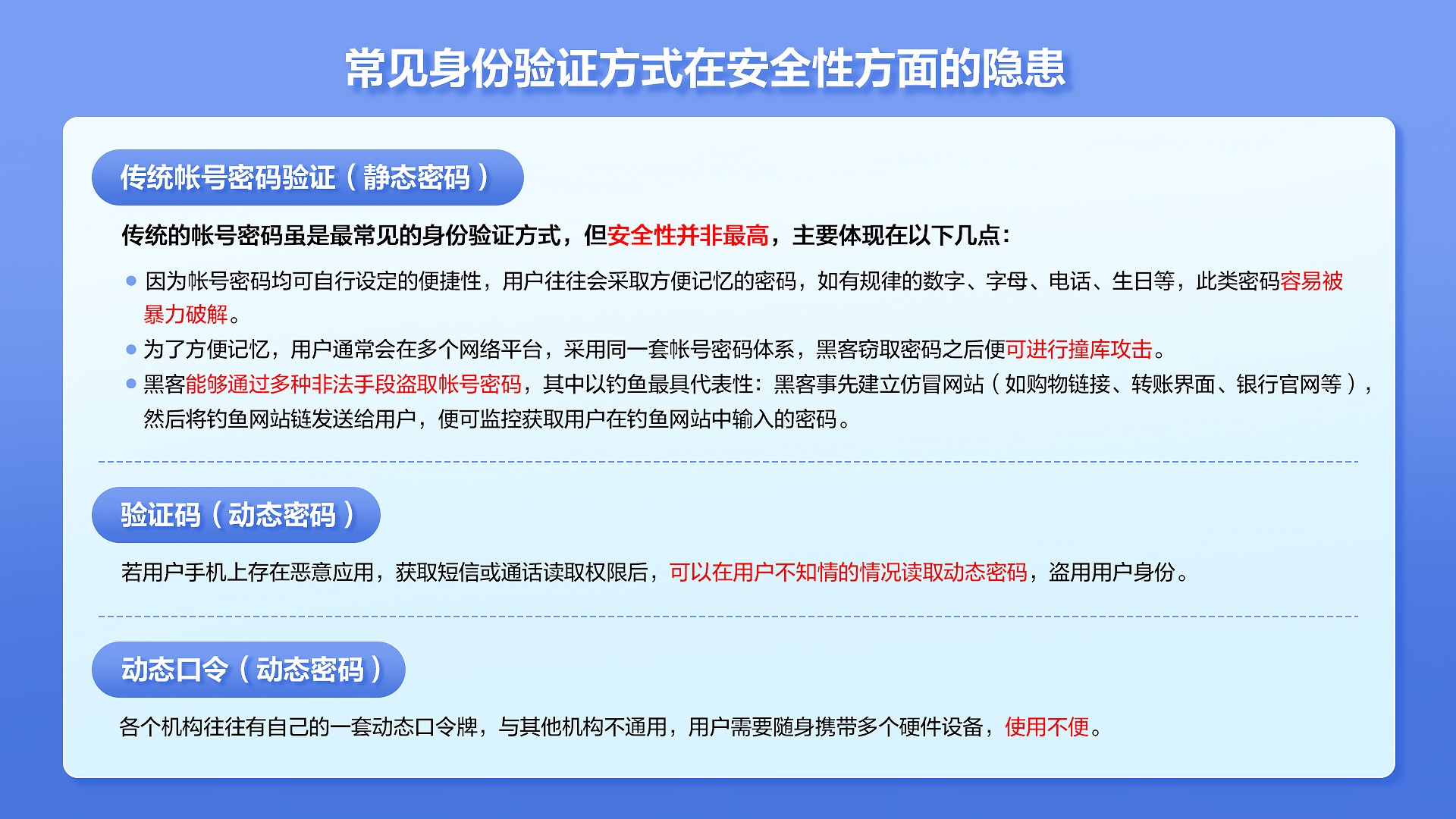
How to protect user privacy without password authentication?
![[yolov3 loss function]](/img/79/87bcc408758403cf3993acc015381a.png)
[yolov3 loss function]

Matlab boundarymask function (find the boundary of the divided area)
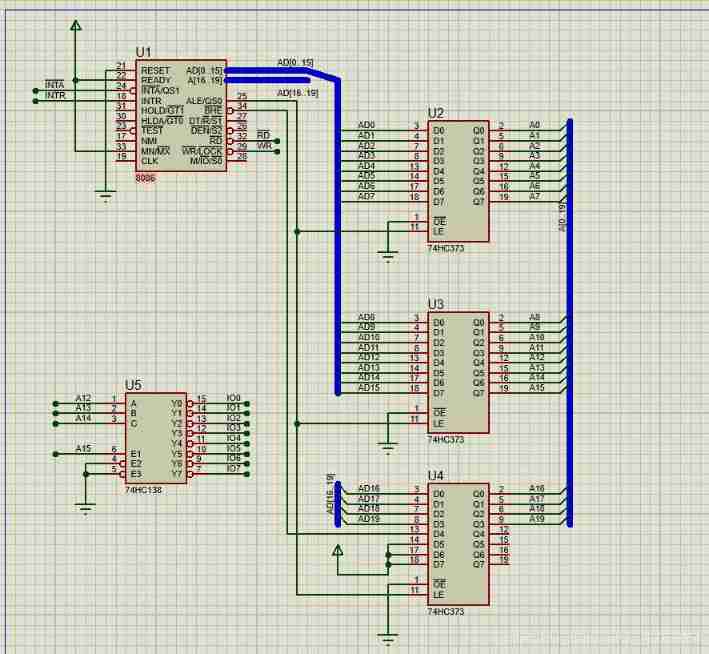
16 channel water lamp experiment based on Proteus (assembly language)
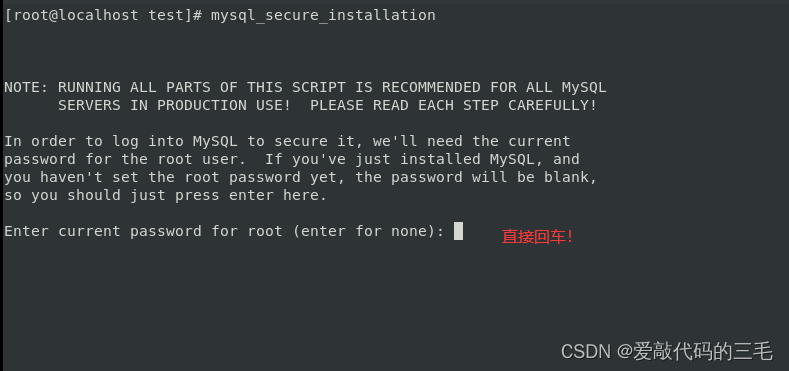
Linux Installation and deployment lamp (apache+mysql+php)
随机推荐
redis主从中的Master自动选举之Sentinel哨兵机制
How to get a token from tokenstream based on Lucene 3.5.0
Idea set the number of open file windows
Liunx prohibit Ping explain the different usage of traceroute
Pytorch softmax regression
Four operations and derivative operations of MATLAB polynomials
Pytorch weight decay and dropout
View all processes of multiple machines
The solution of outputting 64 bits from printf format%lld of cross platform (32bit and 64bit)
[upsampling method opencv interpolation]
HiEngine:可媲美本地的云原生内存数据库引擎
Yolov5 target detection neural network -- calculation principle of loss function
16 channel water lamp experiment based on Proteus (assembly language)
Matlab imoverlay function (burn binary mask into two-dimensional image)
Yolov 5 Target Detection Neural Network - Loss Function Calculation Principle
XML parsing
[mainstream nivida graphics card deep learning / reinforcement learning /ai computing power summary]
Codeforces Round #804 (Div. 2)
[configuration method of win11 multi-user simultaneous login remote desktop]
调查显示传统数据安全工具在60%情况下无法抵御勒索软件攻击